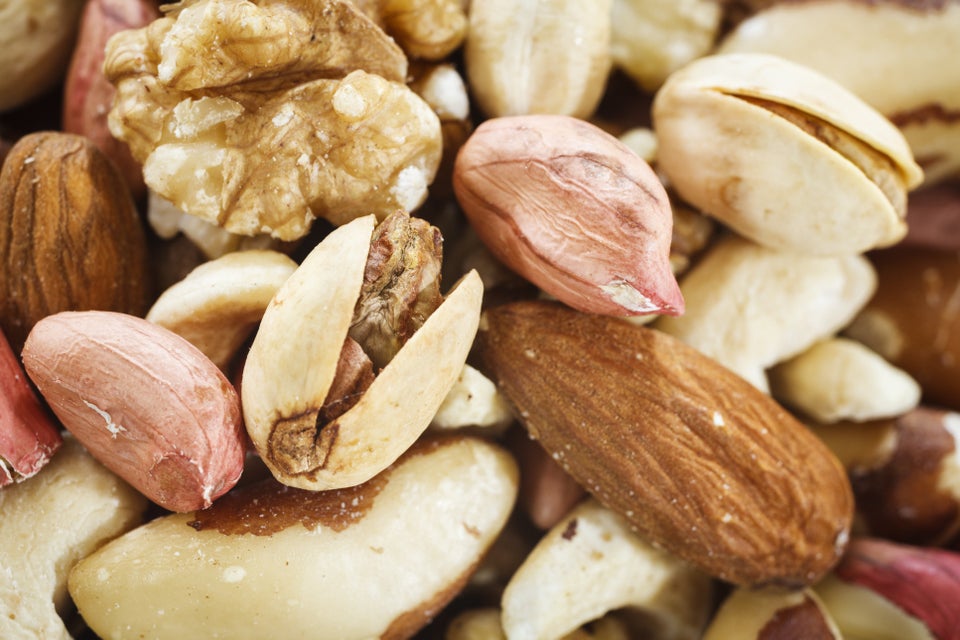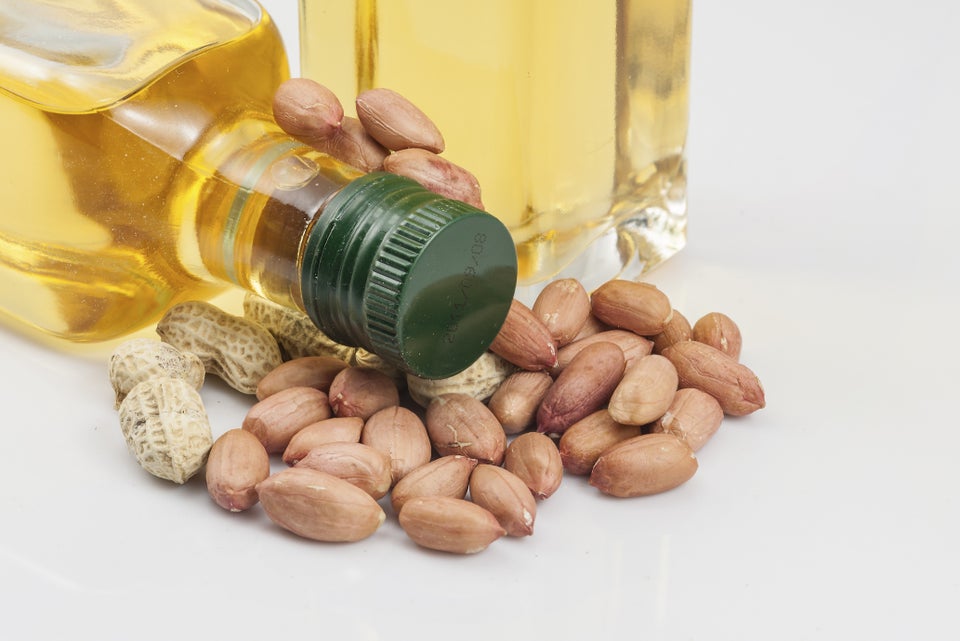You're already cooking skirt steak and chicken thighs. But here are more inexpensive foods chefs think are even tastier than their pricier counterparts.
By Lynn Andriani
When You Want a Veal Chop

Szakaly/iStock/Thinkstock
Some chefs and cooking instructors say that veal is so mildly flavored that it can't stand on its own and needs a sauce to really sing (think marsala, piccata). If you're more in the mood for a thick chop, though, you might be better off with pork. Veal is an expensive meat, with loin chops priced as high as $16 a pound and rib chops, $26. Pork chops, though, even the juicy Berkshire variety (from the famous "black pigs" of England), are only $9 a pound. Carolina Diaz, executive chef of Filini Bar and Restaurant in Chicago, used to have a veal dish on her menu and replaced it with a grilled Berkshire pork chop, without having heard one complaint.
When You Need a Hardworking Garnish

irrez79/iStock/Thinkstock
If you're making a dish with celery, whether it's a soup, salad or stir-fry, chef Annie Pettry of Decca restaurant in Louisville, KY, says don't bother with a separate garnish, such as expensive fresh herbs or microgreens. Instead, use the celery leaves; they're cheaper and do a better job reinforcing the dish's flavor. (Pettry also adds them to salads.) Another inexpensive workhorse: fennel fronds. If you've already bought fennel to use the bulb, sprinkle the sprigs, which have a soft anise flavor, over whatever you've made right before serving.
When You're Making Carbonara

robynmac/iStock/Thinkstock
Trusty and useful, frozen baby peas are available year-round, can be stashed in your freezer for months, cost about $2.29 for 16 ounces (compared to $5 for fresh), and tend to taste even sweeter than fresh (there's such a short window of time for fresh ones to be delicious, that usually, by the time they get from the farm to your store, they're starchy and flavorless). Pettry uses them at home, when she's making pasta (such as classic carbonara), or she tosses them into salads when they've thawed but are still cold.
Advertisement
When You Have an Abundance of Basil

graletta/iStock/Thinkstock
The first thing we think of when we see a floral, fragrant bunch of basil is pesto, yet we often balk at the price of pine nuts, which are traditionally used to make the sauce, along with less pricey olive oil, garlic and Parmesan. Pine nuts can go for $16 for 8 ounces, while walnuts are about a quarter of that (the same quantity will cost you about $5). Pettry says they add another flavor dimension; she also sometimes swaps in pumpkin seeds, which cost even less ($3 for 8 ounces).
When You Want a Fast Hors d'Oeuvre

Katsiaryna Belaya/iStock/Thinkstock
Perhaps because white button mushrooms are plain-looking, or maybe even because they're inexpensive, home cooks tend to pooh-pooh them, says Adam Halberg, executive chef of the Barcelona Restaurant Group, instead paying top dollar for porcini or chanterelles. And while those varieties are delicious, Halberg says basic white mushrooms can taste just as incredible -- and are one of the best deals in your supermarket. (Plus, fancy mushrooms are often harder to clean and require more complicated cooking methods.) Halberg likes to eat them grilled on bread, with a glass of wine; try them in this recipe with crostini or in this classic Spanish preparation.
When You Just Can't Handle One More Winter Tomato

Paula Banks/Moment Open/Getty Images
Fresh tomatoes in January are often a sad sight, and they're certainly no bargain (about $5 a pound). Canned tomatoes, though, whether they're whole or chopped, have a much more concentrated flavor than fresh tomatoes do, and cost way less (about $2 a pound). If you're making a tomato sauce and want it to have a deep, rich tomato flavor, go with canned, says Sabrina Sexton, lead instructor at the Institute of Culinary Education, since "it's almost impossible to achieve it with fresh."
Advertisement
Related
Before You Go
Buy It In Bulk: Butter And Nuts

Jon Boyes via Getty Images
Just as some super organized people begin their holiday shopping while still in T-shirts, smart shoppers get a head start on supplies for the cookies they'll be baking come December. Butter can be pricey (and many cookie recipes require at least a stick), but Collin Morgan, blogger at the coupon and savings site Hip2Save.com, says it's deeply discounted when you buy large quantities at warehouse clubs. You can get 4 pounds of unsalted butter at Costco for $10.49, which comes out to $2.62 a pound, while a supermarket charges about $4.99 for a pound.
The same goes for nuts, most of which can last in the freezer for one to two years. A 2-pound bag of walnuts is about $12 at Sam's Club, or $.38 per ounce, while at a supermarket you'll pay closer to $.90 per ounce. Bonus: Both nuts and butter are perishable, but freeze wonderfully, so you can buy now and bake later. The one baking item you don't want to buy in bulk, however, is a spice, such as cinnamon or nutmeg. Unless you're going in with a friend and splitting that 10-ounce jar, it'll probably lose its flavor before you finish using it.
The same goes for nuts, most of which can last in the freezer for one to two years. A 2-pound bag of walnuts is about $12 at Sam's Club, or $.38 per ounce, while at a supermarket you'll pay closer to $.90 per ounce. Bonus: Both nuts and butter are perishable, but freeze wonderfully, so you can buy now and bake later. The one baking item you don't want to buy in bulk, however, is a spice, such as cinnamon or nutmeg. Unless you're going in with a friend and splitting that 10-ounce jar, it'll probably lose its flavor before you finish using it.
Less Is More: Medicine Cabinet Staples

belchonock via Getty Images
Morgan, who checks the prices at Costco about once a month (soon, everyone will be able to do this online), says deodorant and other personal-care items can actually be more expensive when you buy them in bulk. You're much better off at the grocery store or drugstore, since these retailers often discount health and beauty products to get customers into the store. And while most warehouse clubs don't allow manufacturers' coupons, supermarkets and drugstores absolutely do. By using one (look for them on the manufacturer's Facebook page), or even two (you can usually also add a store coupon), you just might walk out of the store with a practically free stick of deodorant or tube of toothpaste.
Buy It In Bulk: Gift Cards

ASSOCIATED PRESS
Whether you're giving them as presents or keeping them for yourself, gift cards are a better deal when you buy more of them. They're available for anything from movies (we found 10 tickets to any AMC theater for $85), to restaurants (five $20 gift cards to Peet's Coffee for $80), to music and app downloads (a 4-pack of $25 iTunes gift cards for $95). And while we're on the subject of giving, if you're still sending old-fashioned greeting cards (yay for tradition!), many Etsy sellers offer bulk discounts, such as this one which offers any six designs in her collection for $20.
Advertisement
Less Is More: Salad Dressing

Grata Victoria via Getty Images
The golden rule of buying in bulk is computing the cost per unit (just make sure you know what you're comparing). And when it comes to salad dressing, mayonnaise and other condiments, doing a calculation is smart, but there's more to consider. Morgan has calculated the price per ounce on salad dressings at warehouse clubs and supermarkets, and found that if the supermarket is having a sale, she can actually get it for less (and don't fear generic brands: Some chefs actually prefer them). Even more important, though, is that it can be near impossible to finish that gallon jug of Caesar salad dressing before its expiration date passes.
Buy It In Bulk: Batteries

ballyscanlon via Getty Images
Lithium batteries, which are common in consumer electronics, have a great shelf life, so they're perfect for buying in large quantities. Stored at room temperature, or at about 70 degrees, they'll last 10 to 15 years (just keep them out of reach of children, since they can be dangerous if swallowed). Alkaline batteries -- the ones shaped like cylinders -- have a slightly shorter, but still very good, lifespan: about 5 to 10 years, in storage. One exception: Rechargeable batteries lose 1 percent of their deliverable energy every day, so only purchase those as needed.
Less Is More: Peanut Oil

axz66 via Getty Images
We know cooking oils don't last forever, but until we saw this chart, we had no idea just how quickly they can go rancid. For instance, peanut oil, which is excellent for achieving the crispiest crust on a chicken drumstick, will keep for two years in your pantry (after you open it). If you're making fried chicken for six, you'll probably go through about 64 ounces of oil, which is a size that most supermarkets sell for $7, or even less. If you buy a larger size and don't fry foods often, the oil will likely go bad before you finish it (signs to look for: an off smell or a change in color).
Advertisement

